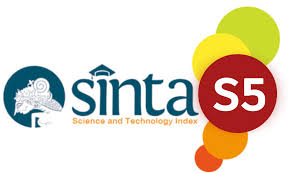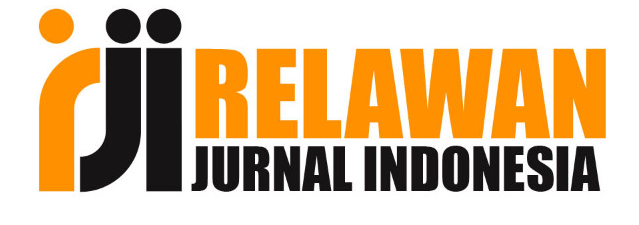USING THINK PAIR SHARE TECHNIQUE WITH DESCRIPTIVE TEXT TO IMPROVE READING COMPREHENSION OF THE TENTH GRADERS OF SMA LTI IGM PALEMBANG
DOI:
https://doi.org/10.36982/jge.v6i1.263Abstract
The objectives of this research attempted to investigate whether or not using Think Pair Share (TPS) Technique gave significant improvement and significant difference on the tenth graders’ reading comprehension achievement of SMA LTI IGM. A quasi experimental design was used in this research. Two groups, experimental and control group, were assigned in this research in which each group consisted of 20 students, respectively. Intervention was given for 12 meetings including pretest and posttest administration. Reading comprehension test, in form of multiple choice question, was administered to measure the students’ reading comprehension. The research findings showed that (1) there was a significant improvement on the tenth graders’ reading comprehension achievement after being taught by using Think Pair Share Technique, and (2) there was a signifiant mean difference on the tenth graders’ reading comprehension achievement after being taught by using Think Pair Share Technique and those who were not. Therefore, the TPS technique significantly improved the tenth graders’ reading comprehension achievement of SMA LTI IGM.
Key words : Think pair share technique, descriptive text, reading comprehension
References
Allen, J. (2007). Inside words: tools for teaching academic vocabulary, grades 4-12. Portland, OR: Stenhouse Publishers.
Alyousef, H. S. (2005). Teaching reading comprehension to ESL/EFL learners. The Reading Matrix, 5(2), 143-153. Retrieved from http://www.reading matrix .com/ articles/alyousef/article.pdf.
Arends, R. I. (2012). Learning to teach 9th edition. New York, NY: Mc. Graw Hill Companies.
Avval, F., Z., Jarahi, L., Ghazvini, K., &Youssefi, M. (2013). Distribution of Handouts in Undergraduate Class to Create More Effective Educational Environment. International Journal of Education and Research. 1(12), 1-6. Retrieved from http://www.ijern.com/journal/December-2013/30.pdf.
Azlina N. A. N. (2010). CETLs: Supporting collaborative activities among students and teachers through the use of think-pair-Share techniques. International Journal of Computer Science Issues, 7(5), 18-29. Retrieved from http://www. ijcsi.org/papers/7-5-18-29.pdf.
Cohen, L., Manion, L., &Marison. K. (2007). Research method in education. New York, NY: Routledge.
Fauziyati, D. R., &Istianah, W. (2013). The effect of using think-pair-share technique on the eighth grade students’ reading comprehension achievement at SMPN 3 bangsalsarijember.Pancaran, 2(2), 42-48.
Fraenkel, J. R., Wallen, N. E., & Hyun, H. H. (2012). How to design and evaluate research in education (8thed). New York, NY: Mcgraw Hill, Inc.
Han, L. (2010). The advantages and the problems of multimedia-aided English reading instruction. Journal of Language Teaching and Research, (1)3, 320-323. doi:10.4304/jltr.1.3.320-323.
Harmer, J. (2007). How to teach English. China: Pearson Education Limited.
Kagan, S. (1994). Cooperative Learning. San Clemente, CA: Kagan Publications.
Kaivanpanah, S., &Alavi, M. (2008). Deriving unknown word meaning form context: Is it reliable?.RELC Journal, 39(1), 77-95. Retrieved from: http:// dx.doi.org/10.1177/0033688208091141.
Klare, G. R. (1988). The formative years. In Zakaluk, B. L., & Samuels, S. J. (Eds.), Readability: its past, present, and future. (pp. 27-47). Newark, NJ: The International Reading Association Inc.
Mandal, R. R. (2009). Cooperative learning strategies to enhance writing skill. Chennai: Lady Willing don Institute of Advanced Study in Education. Retrieved from http://www.mjal.org/removedprofiles/2013/Coop.pdf.
Mikulecky, B. S. (2008). Teaching reading in a second language. Pearson Education, 0-13-503146-X. Retrieved from http://www.longman home usa. com/content/FINALLO%20RESMikuleckyReading%20Monograph%20. pdf
OECD. (2014). PISA (2012) results:what students know and can do.Student performance in mathematics, reading and science (volume 1). Retrieved from https://www.oecd.org/pisa/keyfindings/pisa-2012-results-volume-I .pdf.
PIRLS International Results in Reading (2011). Lynch School of Education, Boston College: TIMSS & PIRLS International Study Center. Retrieved fromhttp://timssandpirls.bc.edu/pirls2011/downloads/P11_IR_FullBook.pdf.
PISA. (2012). Results in focus: what 15-year-olds know and what they can do with what they know.Retrieved from https://www.oecd.org/pisa/ keyfindings/pisa-2012-results-volume-I.pdf.
Ribka, S. (2016, March 24). As illiteracy rate lowers, RI struggles with reading habits. The Jakarta Post. Retrieved fromhttp: //www.the jakarta post.com/ news/2016/03/24/as-illiteracy-rate-lowers-ri-struggleswithreadinghabits. Html.
Richards, J. C. & Schmidt, R. (2010). Longman dictionary of language teaching &applied linguistics (4th ed.). London: Longman (Pearson Education).
Zamanian, M., &Heydari, P. (2012). Readability of texts: state of the art. Theory and Practice in Language Studies, 2(1), 43-53. doi:10.4304/tpls.2.1.43-53.
Downloads
Published
How to Cite
Issue
Section
License
Global Expert: Jurnal Bahasa dan Sastra is published by Universitas Indo Global Mandiri and licensed under a Creative Commons Attribution-ShareAlike 4.0 International License.











